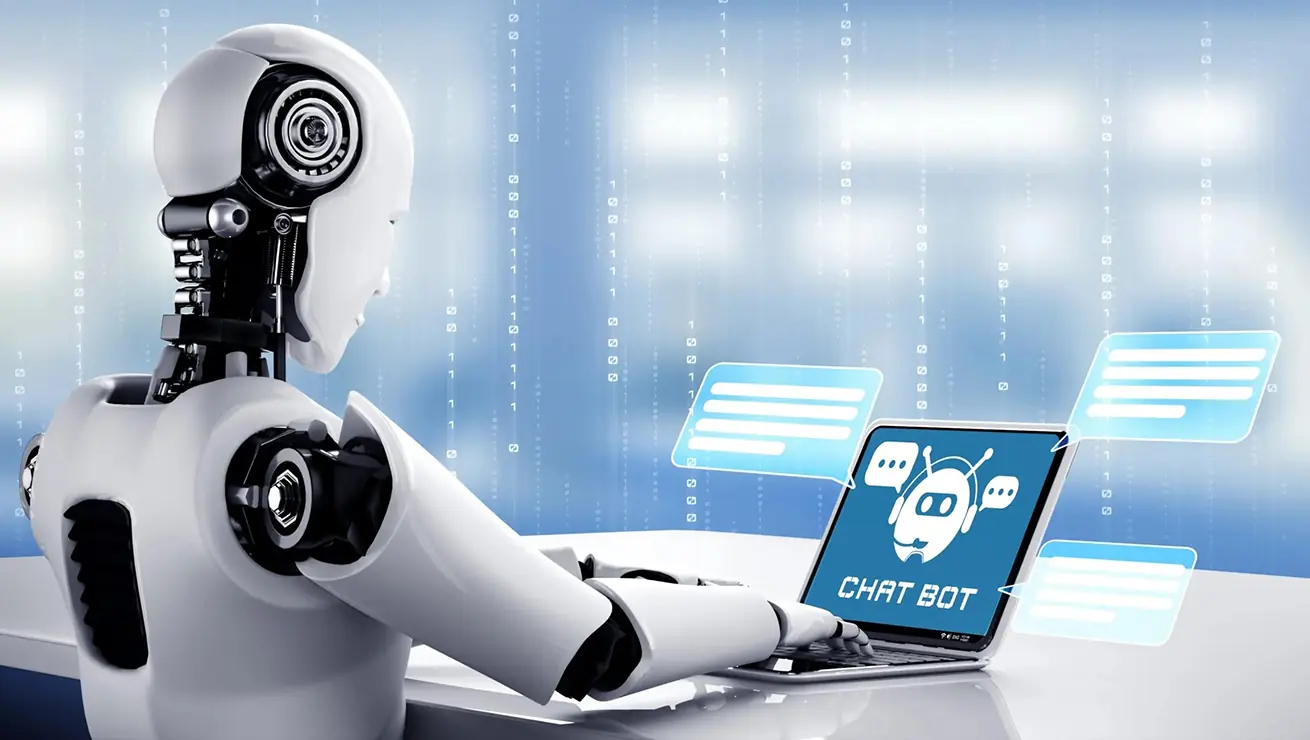Introduction
In today’s fast-paced digital ecosystem, customers demand instant responses and personalized interactions. That’s where AI chatbots come in, transforming the way businesses engage with their audience, resolve queries, and drive conversions.
If you’re wondering how to create an AI chatbot that genuinely boosts engagement and customer satisfaction, this comprehensive guide is for you. We’ll explore:
- What AI chatbots are
- Benefits of chatbot development
- A step-by-step guide to building one
- Tools and platforms
- Use cases and trends
- How HW Infotech can help
What Is an AI Chatbot?

An AI chatbot is a software application powered by artificial intelligence and natural language processing (NLP) that simulates human-like conversations. Unlike rule-based bots that rely on scripted responses, AI chatbots understand context, intent, and user behavior to provide intelligent answers.
Benefits of AI Chatbots for Customer Engagement
Creating an AI chatbot is not just about automation; it’s about delivering value at scale. Here’s how chatbots revolutionize engagement:
1. 24/7 Customer Support
AI chatbots never sleep; they handle queries around the clock, reducing wait times and increasing customer satisfaction.
2. Personalized Interactions
They analyze user data to tailor conversations, product suggestions, and responses in real time.
3. Lead Qualification
Chatbots can ask qualifying questions, capture leads, and hand off high-value prospects to human agents.
4. Cost Savings
Automating repetitive queries significantly reduces support and operational costs.
5. Scalability
Whether it’s 10 or 10,000 users at once, chatbots scale effortlessly.
How to Create an AI Chatbot: Step-by-Step Guide

Let’s dive into the development process of building an AI chatbot that aligns with your business goals.
Step 1: Define the Purpose and Use Case
Start with clarity. Ask:
- What do you want your chatbot to do?
- Who will use it customers, employees, or both?
- What pain points will it solve?
Examples of chatbot goals:
- Answer FAQs
- Book appointments
- Guide product purchases
- Offer tech support
- Conduct surveys
Step 2: Choose the Right Platform
There are two broad approaches:
- Code-based (custom-built chatbots with full control)
- No-code platforms (faster and user-friendly for non-tech users)
Popular tools:
| Platform | Best For |
| Dialogflow (by Google) | Complex NLP, multilingual bots |
| Microsoft Bot Framework | Integration with Microsoft ecosystem |
| Rasa | Open-source, high customization |
| IBM Watson Assistant | Enterprise-grade bots |
| Tidio / Drift / ManyChat | E-commerce and marketing automation |
Step 3: Design the Conversation Flow
Use tools like Chatbot Flowcharts or Botmock to map user journeys and dialogues.
Tips:
- Start with greetings and onboarding questions.
- Include fallback responses for unknown queries.
- Use buttons, quick replies, and carousels for smoother UX.
- Avoid robotic language keep it conversational and friendly.
Step 4: Train the AI with NLP
Your chatbot needs to understand human language. Use Natural Language Understanding (NLU) to process user intent.
Components:
- Intents – What the user wants (e.g., “book a demo”)
- Entities – Specific info (e.g., date, location)
- Utterances – Ways users might express an intent
For example, the intent “track my order” can have utterances like:
- “Where is my package?”
- “Track my shipment”
- “Order delivery status”
Platforms like Dialogflow and Rasa provide training tools to improve accuracy over time.
Step 5: Integrate APIs and Backend Systems
To perform real actions (like booking a service or fetching order status), your bot must integrate with:
- CRM tools (HubSpot, Salesforce)
- E-commerce platforms (Shopify, WooCommerce)
- Payment gateways
- Databases
- Customer support tools (Zendesk, Freshdesk)
Use REST APIs to enable real-time communication with your backend systems.
Step 6: Choose Deployment Channels
Where do your customers engage with you most?
- Website Chat Widget
- Facebook Messenger
- WhatsApp Business
- Mobile App
- Telegram, Slack, or SMS
Omni-channel bots ensure a consistent experience across platforms.
Step 7: Add Analytics and Feedback Mechanisms
To improve over time, your chatbot needs to learn from users.
Use analytics to track:
- Popular questions
- Drop-off points
- Response times
- Customer satisfaction scores (CSAT)
Tools: Google Analytics, Chatbase, Botanalytics
Also, include “Was this helpful?” feedback prompts.
Step 8: Test Thoroughly and Launch
Before going live:
- Run unit and integration tests
- Test edge cases and multiple conversation paths
- Ensure proper fallbacks for unsupported queries
Involve real users in beta testing and refine accordingly.
Best Practices for Building an AI Chatbot
- Keep it Human: Make the bot’s tone friendly, empathetic, and brand-aligned.
- Don’t Overpromise: If the bot can’t do something, admit it and escalate to a human.
- Context Matters: Maintain context across sessions (if possible) for smarter conversations.
- Stay Updated: Continuously feed the bot with new intents, FAQs, and use-case refinements.
Use Cases of AI Chatbots by Industry
| Industry | Use Cases |
| E-commerce | Order tracking, product recommendations, cart reminders |
| Healthcare | Appointment booking, symptom checker, prescription refills |
| Banking | Balance inquiry, card blocking, fraud alerts |
| Education | Course guidance, student FAQs, exam schedules |
| Travel | Booking, itinerary updates, customer support |
| Real Estate | Property listings, virtual tours, lead qualification |
Emerging Trends in AI Chatbot Development
- Voice-enabled bots (via Alexa, Google Assistant)
- Sentiment analysis for emotional intelligence
- Multilingual support for global users
- Generative AI (like ChatGPT-based bots) for deep interactions
- Hybrid bots: AI + Human handoff in complex scenarios
Common Mistakes to Avoid
Relying only on rule-based flows
Ignoring data privacy (especially in finance or healthcare)
Deploying without monitoring user feedback
Lack of human support option
Poor mobile compatibility
Why Choose HW Infotech for AI Chatbot Development?
At HW Infotech, we combine deep technical expertise with customer-focused design to build AI chatbots that drive results.
What We Offer:
- End-to-end chatbot strategy and design
- NLP-powered bots with multilingual support
- Custom integrations with CRMs, ERPs, and APIs
- Voice, text, and hybrid bots
- Post-launch monitoring and maintenance
Whether you want a WhatsApp business bot, a website assistant, or a smart customer service chatbot, we can help you build one that engages, converts, and retains users.
Conclusion
Creating an AI chatbot is no longer a futuristic idea — it’s a business necessity. From enhancing customer engagement to reducing operational costs, AI-powered bots bring unmatched value when implemented correctly.
If you’re looking to build a chatbot that is intelligent, responsive, and aligned with your business goals, following this guide will put you on the right path. Better yet, let experts at HW Infotech help you go live faster with custom-built solutions tailored to your needs.

